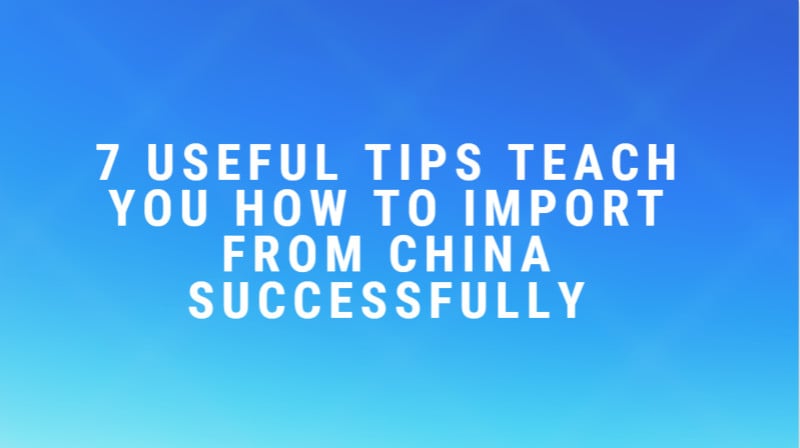
How to import products from China to the United States? Keep reading. In this guide, we explain that the US-based business must know the whole importing process from China including product selection preference, and how to find a qualified supplier, paying for goods, arranging shipping and final delivery.

1. Import permit and familiarity of the US product safety regulations
There is no general import permit for importing goods from China. As a result, when you source in China as an importer, make sure that you get the license to import from the relevant federal agency, and ensure your imported products meet all federal standards. Different federal agencies oversee different imported products and requirements vary.
Agencies that oversee common imports include:
- Food and Drug Administration (FDA). The FDA regulates the import of all food, medication, cosmetics, some housewares, and food-related items, health devices, and more. The FDA requires prior notice be given for all imported food products.
- Environmental Protection Agency (EPA). Chemicals imported into the U.S. are often regulated by the EPA.
- Department of Transportation (DOT). According to information from CBP, imports regulated by the DOT include cars and motor vehicles.
- Consumer Product Safety Commission (CPSC). Toys and children’s products are among imports regulated by the CPSC.
- Federal Trade Commission (FTC). The FTC oversees a variety of parts of the import process, including product labeling and more.
- U.S Department of Agriculture (USDA). The USDA oversees the import of plants, plant-products, wood, animals and more. In many cases, the USDA requires permits and more.
- Alcohol and Tobacco Trade and Tax Bureau (TTB). The TTB issues permit for importers of alcohol and tobacco products. TTB permits include the Federal Basic Permit, Certification of Label Approval (COLA), Natural Wine Certificate, and Certification of Age and Origin. These permits are required when importing alcohol.
Besides, you also have to familiarize the US product safety regulations. US-based importers must keep track of two sets of product regulations:
- Federal regulations (applicable in all US states)
- State regulations ( Applicable in certain states only)
Let’s start with the first one as it affects everyone. We’ll give you an overview of relevant government bodies.
CPSIA: This is a framework regulation, which applies to (at least so far) to toys and other children’s products. The definition of a Children’s product is, currently, any product that is marketed as appropriate for children aged 12 or younger.
CPSIA is not a standard. Instead, CPSIA refers to ASTM, and other, product standards. It also sets requirements for product certification, documentation, and labeling.
FCC: The Federal Commission of Communications (FCC) regulates all communication devices, sold in the United States. FCC administers various legal acts, such as FCC Part 15, applicable to electronics.
FFA: The Flammable Fabrics Act (FFA) is administered by the CPSC, and sets requirements for fabric flammability. The FFA also requires American importers to issue product certificates, and other documents.
Restricted Substances: The CPSC restricts various substances, in certain products (primarily as part of the CPSIA). However, some of these restrictions may apply to non-children’s products.
Let’s move on the second. As mentioned above, you may also need to take the state regulations that are not governed at a Federal level into consideration. Please check the regulations on your located states.
In addition, importers also need to keep US Tariff in mind when you are planning to source in China.
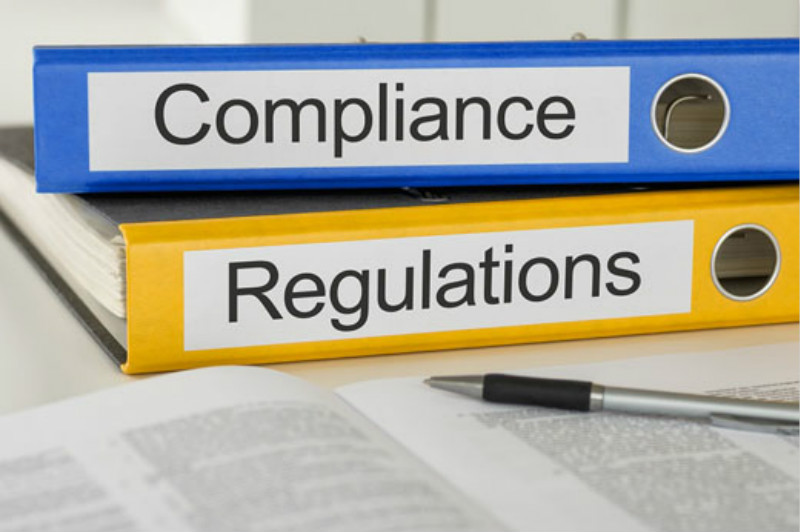
2. Brainstorming and finding right niches
You might ask yourself a few questions when you’re planning to source in China. Are my imports from China easy to sell? Do my imports from China have profitable margins? Are my suppliers reliable and easy to work with? Here we suggest you do a thorough research. To find a marketable and profitable niche, we need to do some research first. Here you may ask yourself: how to find a niche product? For the first step, you have to brainstorm. Below methods are highly recommended to you if you have no idea about the product.
- You can go to the top 100 specialty retailers to get what retailers are good at and get you some ideas about it. If you do have enough time, you can go to the brick-and-mortar stores and go their official website and check the best seller for some great idea.
- Almost everyone has a hobby or an area of interest. You can also start a business that you are interested in based on your already-known knowledge.
If you don’t have suitable hobbies, then try to identify an area you want to learn about.
- Using the Amazon category tree to get one.
The Amazon category tree is a great way for you to brainstorm for a niche. Almost all retailers have some sort of category tree. Besides, Amazon best seller is another option for you on the website
- We recommend the research tool Market Intelligence to make research.
- Trend hunting is to explore up-and-coming product trends. And there is a few sources that are good for this. You simply go through some of these websites and look for things that catch your attention。
TrendHunter (don’t buy anything, just scroll down and click around)
Reddit has lots of subreddits that supply a steady source of product inspiration.
- You can also spy on other sellers to get the niche, or spy on other seller’s product rollouts. You can also spy on sponsored product ads. Generally, you can get the best-seller
After brainstorming, you need to do research and estimate if the import feasible and profitable. Here we recommend a workbook or JungleScout, and Market Intelligence.
For the research part, you can compare, check and determines the imported products.
- Search for your product on Amazon.
- Analyze with your product research tool.
- Input the numbers you need into your workbook.
With above data you get, you will know the average price, the desired price, average revenue, average reviews. You can also forecast the product costs and profits with Amazon calculator. Besides that, HTS Search and FindHS.Codes are for you to estimate your duty rates. With all above in mind, you also need to ask yourself below questions.
- Is this an impulse purchase that does not need any reasonable analysis? This is to make the purchase much more reasonable and profitable.
- Is this product hazardous or fragile to ship? This is to avoid severely increasing shipping costs.
- Is this product counterfeit or not? Please keep in mind that you should do not sell counterfeit products given intellectual property right dispute.
- Could I match or exceed the current product of existing sellers? This is to remind you a high-quality product is loved by the customers.
- Is there a passionate community about this product? You might want to leverage influencers, FB groups and similar thing in the future. A product with a booming community is better than selling something without that spark.
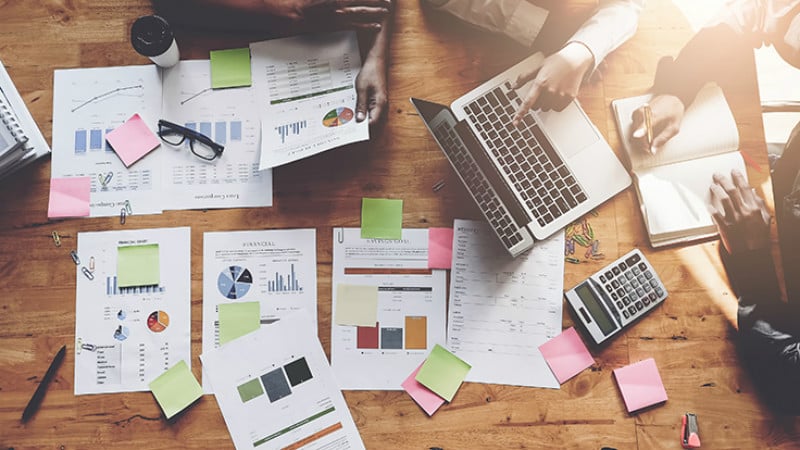
3. Searching for a reliable supplier
A qualified and reliable supplier is an important part of your importing process. A quality supplier will free you from the defective products, scammers and other related to the importing. How to get such a supplier?
The first method is to get them from business trade shows in the USA or China. As we know, many superior and professional Chinese suppliers are tempted to attend the trade shows both at home and abroad. Fairs kicked off in the US include CES, Global Pet Expo, International Housewares Show, Toy Fair New York, ASD, and other fairs. Trade Fairs is the one where you could get all the detailed info of the fair. Exhibitions in Hong Kong and Canton Fair are the ones exhibited in China.
If you are lucky enough, you will be able to find one on an American Show. Most Chinese suppliers with medium to large trading companies or manufacturers are likely to go overseas trade shows to attract customers despite high cost for booth fee, visa fee, transportation, and labor cost, but the products exhibited on the show are a little higher given their cost and less competitive. Prices differ in different quality. On the show, you could exchange business card and get their contact info. After that, you could contact them via Skype, Email or WeChat after they go back to China.
There are many different trade fairs in different manufacturing cities of China: Guangzhou, Shanghai, Yuwu, Shenzhen, etc. If your business involves different categories, we suggest going to Canton Fair and the exhibition of Hong Kong. The time of Chinese trade fairs is fixed. Canton Fair kicks off twice a year, one in spring, and one in autumn.
Secondly, we suggest you go to some well-known export city, like Yiwu, a commodity city in Zhejiang Province in China if you find no trade show but you still get a purchasing plan. The city is a paradise for shoppers, covering bags, crafts, furniture, jewelry, shoes, and almost every export market except machinery. You are allowed to source products at any time except for the Chinese Spring Festival.
In addition, with the rapid development of the Internet, you can also go online and get one from the B2B transaction platform. Below are the lists of the B2B platform for your reference.
Alibaba platform is highly recommended for you. As a B2B platform with the most comprehensive and best seller exporters, it handles sales between importers and exporters for over 240 countries. On this platform, most suppliers require MOQ. If your MOQ is small, it will be difficult for you to get a low-priced supplier. On this platform, the quality is not guaranteed with so many suppliers. You must remember to figure out the best suppliers.
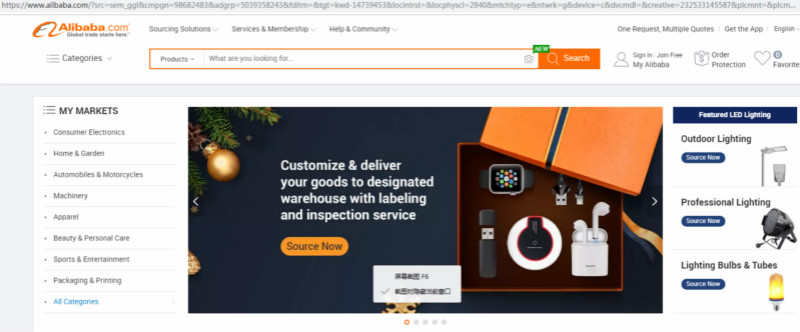
here are some less popular B2B platforms such as made – in -China and globalsouce for you if you find you do not have enough time to figure out a reliable supplier on Alibaba, or your MOQ is much small than the required MOQ of the suppliers on Alibaba. The former one has more professional suppliers ranging from apparel, craft, and vehicle and machinery industry. While the latter one is for the electronics and gifts sectors.
Other platforms like DHgate and AliExpress are other alternatives for you. Unlike the first two recommendations, these ones require a smaller sourcing amount. These two platforms are the best choice for Shopify, Amazon, eBay store owners. Besides, AliExpresss accepts 1 or 2products, thus it is much more suitable for those offer drop shipping service, while DHgate is more suitable for startups and B2C e-commerce seller that wholesale a small amount of the product samples to test their market.
Last but not least, finding a reliable sourcing agent or company is another option. You can ask the agent or company to find a relevant supplier and check it as well as negotiate on behalf of you. LeelineSourcing is such a platform for you to involve the importing part to get a reliable supplier. You don’t need to worry about the quality and if the supplier reliable or not, you just need to tell what you need and your requirement and your budget, and a few days later you’ll get what you want.
4. Making an order
As the above mentioned, you could identify your suppliers and try to contact them via email or Skype for business or WeChat. Generally speaking, email is the commonest way for you to communicate with Chinese suppliers regarding time differences and language barriers. Google Translate will be a tool for them to get your point.
Remember to keep your emails short, straight to the point and error-free for a clear communication. This will help you get a better reply. Here are the points you need to know from suppliers:
Minimal Order Quantities, please double check the MOQ to ensure it is correct. If the MOQ is beyond what you could afford, you can ask the supplier if they negotiating is available or not and let them know what you could afford. Generally, MOQ is always negotiable.
Price for sample order is another important thing to consider as samples help you verify the quality of the products.
Production price per unit of your purchasing is another part for you to known. Ask the supplier how much your products per unit will cost, Get the exact number for further calculation.
Production time is important for your business as time if critical based on the type of your business.
Payment terms to know for your contract are another necessity as the inventory is a major cost for business startups.
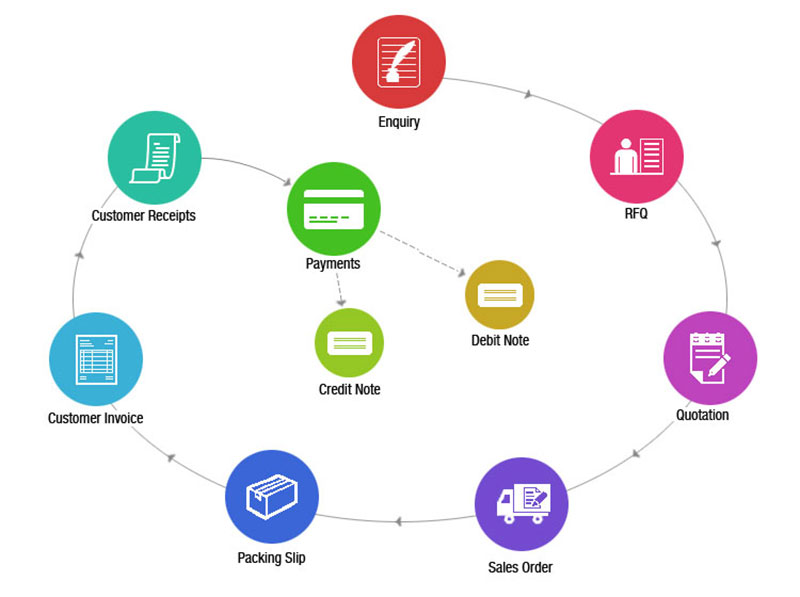 5. Product Shipping
5. Product Shipping
How do I get my imported products? Shipping is a significant part. The US Department of Customs and Border Protection is the agency that enforces the laws and regulations for your import related work. Most imported buyers are likely to choose a licensed customs broker to avoid the delays or refusal of goods in accordance with the law. The basic import document paperwork includes:
- A commercial invoice that lists the purchase price, country of origin and tariff classification of your items;
- A packing list detailing your imports;
- A bill of lading that lists goods in the form of a receipt;
- And an arrival notice from the U.S. agent.
Besides paperwork, you also need to consider below things.
Follow importing laws from China. China has its own rules and regulations about importing. You must follow it to make sure you get a smooth delivery.
You need to note the size of the container as it is a big part in importing. Generally, there are three types of containers when shipping from China:
- 20-foot container
- 40-foot containers
- 40-foot HC (high cube) containers
Choose the right container after counting and dimensionally measuring your import load. If you plan to ship in bulk, full cargo load (FCL) may be your option. If your volume is not enough to fill the cargo, we recommend you to have limited cargo load (LCL), and you can share a cargo space with other similar goods.
Shipping from China by sea may take 2 or 3 months considering various transits and customs clearance, while air freight is much quicker but expensive. Working with a licensed broker to figure out the best method for your will be much efficient for you.
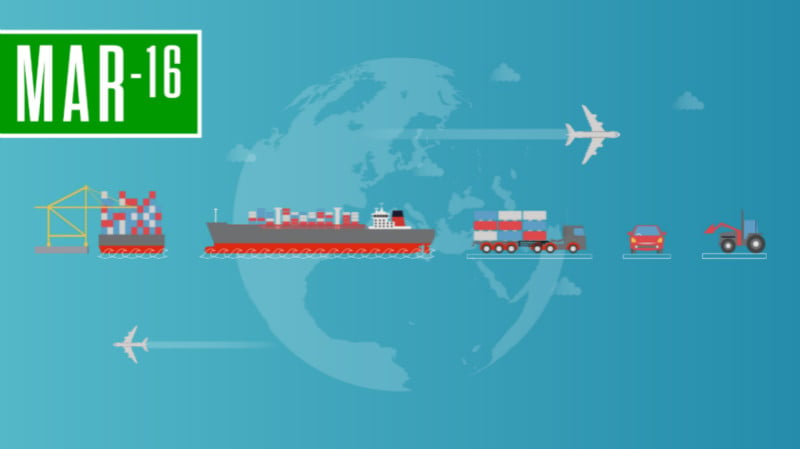
6. Customs Clearance
Customs clearance is a big part during the delivery. While a licensed customs broker with customs bond issued by the U.S. Department of the Treasury will help you with it. They will ensure that your imported goods comply with all customs regulations and rules to make a smooth and efficient import process. Generally, their services might include below area:
- Manage customs clearance for imported goods at the entry port.
- Prepare the release of goods imported from China
- Make the imported goods a successful entry of the United States
- Work with CBP to make sure that all duties, taxes, and fees are paid as required.
- Determine which permits are required and help you to get the required permits.
Give your suggestion about the import process including the entry ports selection.
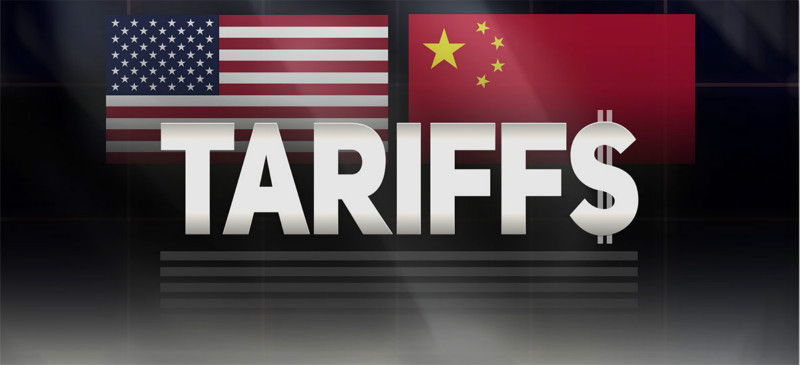
7. Cost and Payment method
There are many costs involved when you import products from China. And this shall be well understood to make sure you get what your actual landed price of a product by the time it arrives in your warehouse. It is integral to understand the landed costs before you price your imported goods on the market. What are the costs involved for your importing?
Cost for the imported goods, shipping costs included the size of the product, the container shipping costs, container cartage costs, and the customs duties.
The payment method main refers to the importer’s payment for the supplier. Generally, there are following methods for your reference.
- International wire transfer. This is a commonly used method payment for small- to medium-sized transactions. International wire transfers are made before the delivery of goods in many cases.
- Open account. This method of payment allows the importer to pay for goods after they have been received. The wholesaler or manufacturer extends credit.
- Letter of credit. This method of payment works like a traditional bank loan. To use this payment method, the buyer’s bank provides a letter stating how much credit is available to the buyer. A letter of credit often serves as a conditional bank guarantee. The buyer’s bank will pay the supplier when the obligations of the letter are met. The buyer will then make payments to the bank to satisfy the line of credit.
- Online escrow. This payment method works like a letter of credit and is commonly used for smaller transactions, including those less than $5,000. You will find that online importers tend to prefer this method of payment.
- Cash advance. This method of payment is regarded as the riskiest method as it involves cash payment for imported goods in advance of delivery.
- Documentary collection. It works similarly to cash on delivery (COD) option. In the case of the documentary collection, the seller’s bank will work with the buyer’s bank for the collection of payment. Imported products can be available before or after payment, depending on the method of documentary collection used.
With the above in mind, you must be very clear about the process for importing from China to the USA. Actually, it is not as difficult as it looks like. If you still got any problems for the process, please leave us a comment or just contact us to fix it.
Imoldmaking is no. #1 Plastic Injection Molding Companies. We offer best quality of Plastic Injection Molding products, parts, manufacturing in China.
ReplyDeleteFor More Information Visit Here -- food conatiners china
Very significant Information for us, I have think the representation of this Information is actually superb one. This is my first visit to your site. Shipping from China to Australia
ReplyDelete